Antarctica's global connections

The Antarctic continent today forms part of the much larger Antarctic Plate, comprising both continental crust of the land mass and its continental shelf, plus ocean floor in the surrounding deep Southern Ocean. Once, Antarctica formed part of a series of supercontinents along with the other southern hemisphere landmasses, the best known of which is Gondwana. |
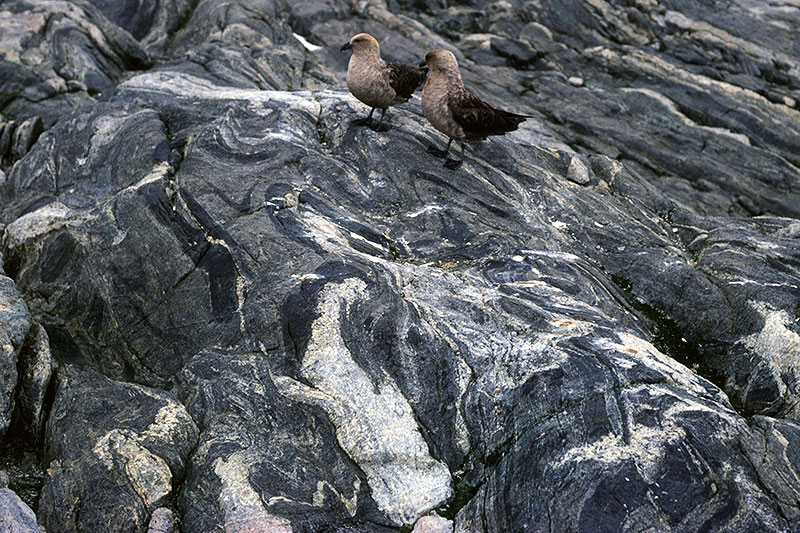 Ancient crystalline rocks make up the core of East Antarctica. Here, Antarctic skuas pose for scale on Archaean (?) gneiss near Australia’s Casey station. | 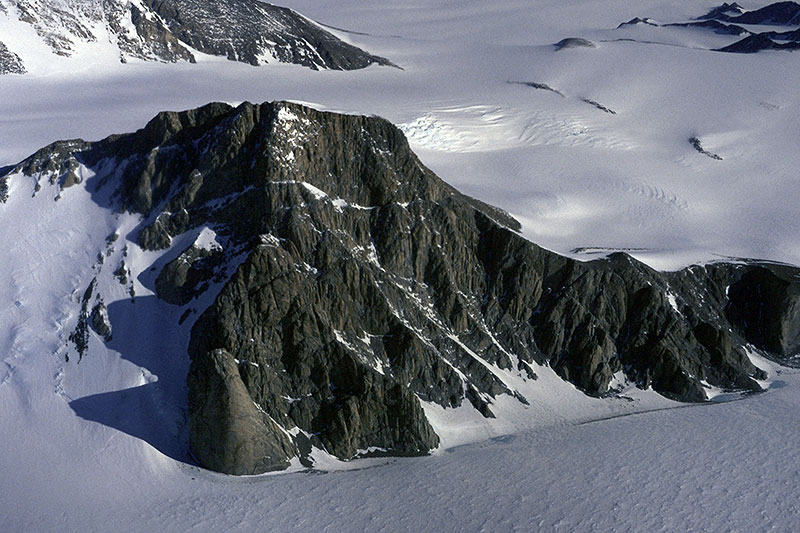 The Ross Orogeny in the Transantarctic Mountains was a major phase of deformation and metamorphism in early Palaeozoic time (c. 500 Ma) and took place along the Pacific margin of the East Antarctic continental shield or “craton”. It was also associated with intrusion of granites. This buttress, well-known from its association with one of Shackleton’s 1908 camps on Beardmore Glacier, comprises smooth glacially eroded granite from this Orogeny. | 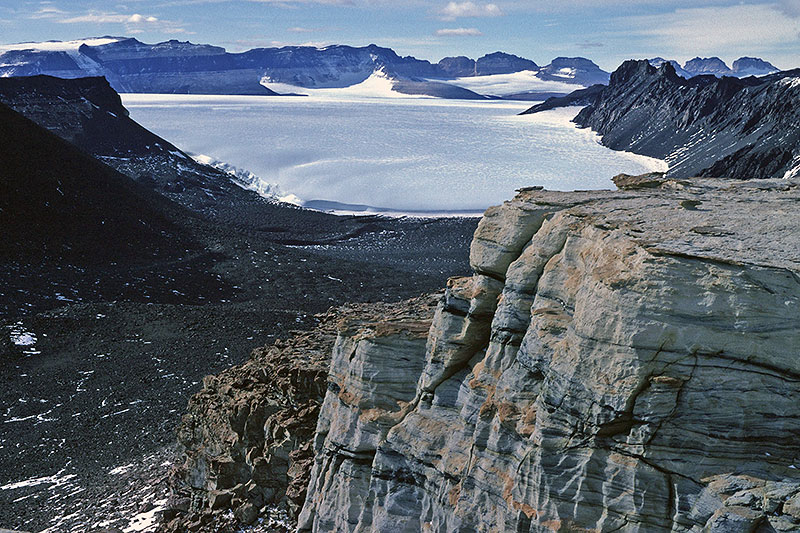 Cross-bedded sandstone characterises much of the Transantarctic Mountains, where it is known as the Beacon Supergroup, named after Beacon Valley in Victoria Land that lies below the photographer in this view. | 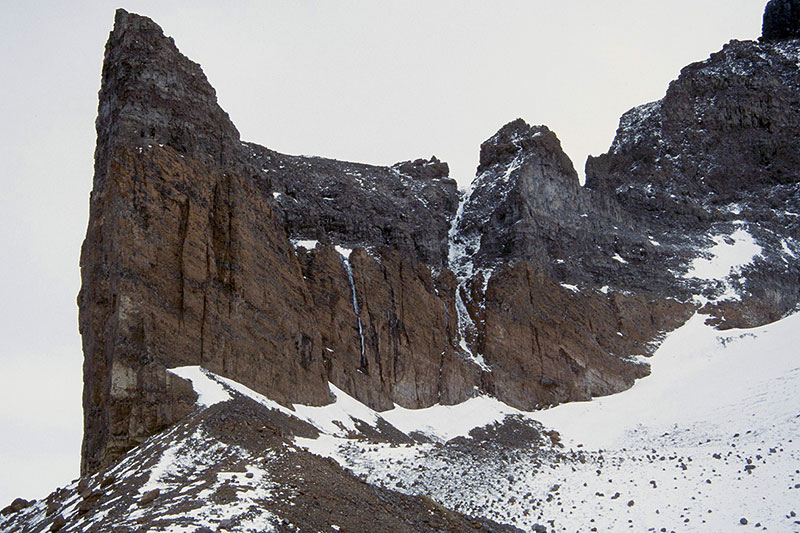 Large-scale cross-bedding in Neogene volcanic breccia (“hyaloclastite”) indicates deposition in a lake or beneath an ice cap; Rabot Point, James Ross Island. |
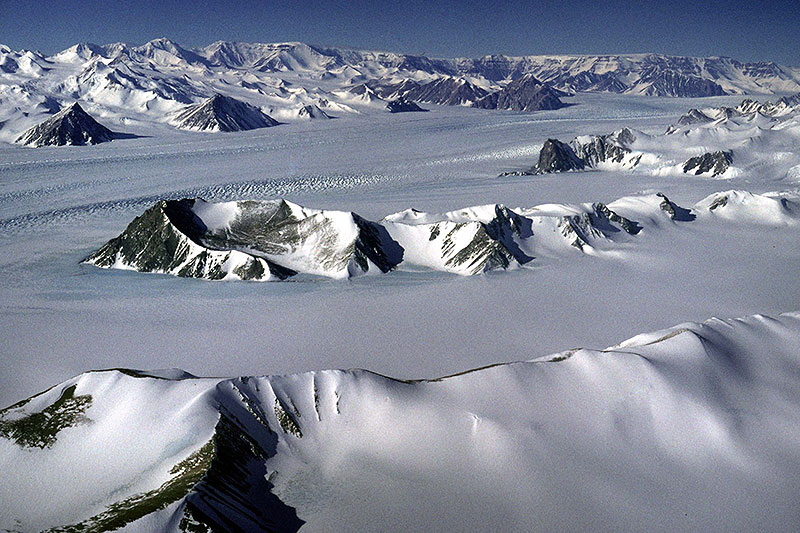 The modern Antarctic environment, dominated by thick ice cover. Here, Amundsen Glacier carves its way through the Transantarctic Mountains, flowing from the Polar Plateau of East Antarctica to the Ross Ice Shelf at sea level. | | | |